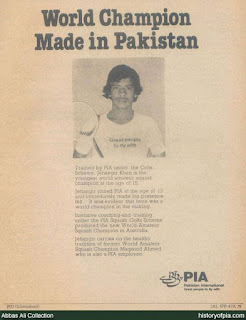Women Rising - THE FEMALE CONUNDRUM IN LEADERSHIP (Harvard Business Review, September 2013)
Persistent gender bias too often disrupts the learning process at the heart of becoming a leader
Culled by Adil Ahmad for publication in TCS CONNECT Corporate Magazine
(January 2014, Vol 13 Issue 1)
In its September 2013 issue the Harvard Business Review
featured an article titled ‘WOMEN RISING: The Unseen Barriers’, authored by
Herminia Iharra, Robin Ely, and Deborah Kolb. Their findings are sobering and
provide much food for thought for women in the workplace.
Integrating leadership into one’s core identity, say the
authors, is particularly challenging for women, who must establish credibility
in a culture that is deeply conflicted about whether, when and how they should
exercise authority. “Practices that equal leadership with behaviors considered
more common in men suggest that women are simply not cut out to be leaders.
Furthermore, the human tendency to gravitate to people like oneself leads
powerful men to sponsor and advocate for other men when leadership
opportunities arise.”
The authors have found that many CEOs who make gender
diversity a priority by setting aspirational goals for the proportion of women
in leadership roles, and develop mentoring and training programs, are
frustrated. They and their companies spend time, money and good intentions on
efforts to build a more robust pipeline of upwardly mobile women, and then not
much happens.
“It’s not enough to identify and instill the ‘right’ skill
sets and competencies as if in a social vacuum. The context must support a
woman’s motivation to lead, and also increase the likelihood that others will
recognize and encourage her efforts, even when she doesn’t look or behave like
the current generation of senior executives.” Traditionally high potential
mentoring and leadership education programs are necessary but not sufficient.
Behavior considered assertive in a man is seen as aggressive
in a woman and thus denigrated rather than rewarded. There is a paucity of role
models for women whose styles and behaviors aspiring leaders can experiment
with and emulate. Fewer female leaders means fewer role models, and can suggest
to young would be leaders that being a woman is a liability, thus discouraging
them from viewing senior women as credible sources of advice and support.
Research indicates that organizations tend to ignore or
under value behind-the-scenes work like building a team or avoiding a crisis,
which women are more likely to do, while rewarding heroic work which is most
often done by men. A vicious cycle ensues. Men appear to be best suited to
leadership roles, and this perception propels more of them to seek and attain
such positions, thus reinforcing the notion that they are simply better
leaders.
In most cultures masculinity and leadership are closely
linked. The ideal leader, like the ideal man, is seen as decisive, assertive
and independent. In contrast, women are expected to be nice, caretaking and
unselfish.
The mismatch between conventional feminine qualities and the
qualities thought necessary for leadership puts female leaders in a double
bind. Women who excel in traditionally male domains are viewed as competent but
less likable than their male counterparts.
Behaviors that suggest self-confidence or assertiveness in
men often appear arrogant and abrasive in women. Meanwhile, women in positions
of authority who enact a conventionally feminine style may be liked but are not
respected. They are deemed too emotional to make tough decisions, and too soft
to be strong leaders.
Eight leading CEOs perceived a distinction between male and
female leadership styles. Though social scientists may not agree with their
take on things, the CEOs said that women were less political, less likely to
define themselves by their careers, more collaborative, better listeners, more
relationship oriented, and more empathetic and reasonable. Women were also more
likely to focus on completing the job at hand, and to neglect to position
themselves for recognition or promotion, while men were more apt to seek attention.
“When you have a complex project involving multiple layers,
you need a leader who is collaborative, and more often than not I found that
leader to be a woman. The very thing that makes the best female leaders very
successful also makes them less visible,” says George Halvorson of Kaiser
Permanente, the California
based managed care consortium.
David Thodey of
Telstar, the Australian Telecom is of the view that in an inclusive culture
employees know that, irrespective of gender, race, creed, sexual orientation,
and physical ability, you can fulfill your personal objectives by aligning them
with the company’s, and have a rich career and be valued as an individual. “You
are valued for how you contribute to the business.”
The authors conclude that effective leaders develop a sense
of purpose by pursuing goals that align with their personal values and advance
the collective good. This allows them to look beyond the status quo to what is
possible, and gives them a compelling reason to take action despite personal
fears and insecurities. Such leaders are seen as authentic and trust-worthy
because they are willing to take risks in the service of shared goals. By
connecting others with a larger purpose, they inspire commitment, boost
resolve, and help colleagues find deeper meaning in their work. Indeed.




Gender parity, a winning idea
ReplyDeleteTHE DAWN NEWSPAPER'S STAFF REPORTER
- File Photo
Updated 2014-02-12 12:17:42
KARACHI: Fifty per cent of world’s talent is female, and anyone ignoring it does so at their own peril, said John Seward, General Manager Coca-Cola Pakistan, on Tuesday.
Speaking at a panel discussion on ‘Promoting gender diversity at the workplace’, at the Women Leadership Summit, Mr Seward was candid enough to point out that “men do not promote women at work and women do not promote women at work.”
Highlighting the glass ceiling women workers face in the public and corporate spheres, he stressed that change does not come with advocacy alone but rather adversarial decisions have to be taken.
“If women want rights, they have to demand rights,” he asserted.
In terms of the glass ceiling, senior management is a long learning process. “It’s easier to be on the board of directors of a company than trying to build the skill sets of an illiterate woman who wants to reach a senior management position,” he said.
Giving the example of his company, he said that they were actively encouraging women to take up labour-centric jobs, traditionally considered a ‘man’s domain’, as well as executive positions.
Dr Ishrat Husain, former governor of the State Bank of Pakistan and keynote speaker at the event, said that cultural and societal barriers prevented the rise of women to higher positions. “Even liberal families believe that a woman’s place is in the house,” he observed.
Stressing that financial independence made women stronger, he quoted the example of the Benazir Income Support Programme which “has empowered over seven million households and placed women in a dominant decision-making position”.
He said that policymakers need to be persuaded to allow for gender mainstreaming.
L&T Seawoods CEO Neera Saggi, who is also the first woman president of Bombay Chamber of Commerce and Industry since its inception 177 years ago, in her keynote address on ‘Women making an impact’ said that women have to step out and avail opportunities through networking actively.
Baroness Sayeeda Warsi, Minister for Faith and Communities, UK, addressed the event via video link.
Other speakers included President and CEO Opic USA Elizabeth Littlefield, SBP Deputy Governor Kazi Abdul Muktadir and Vice Chairman of Mesan Electronics and Trading Devrim Gürsel.